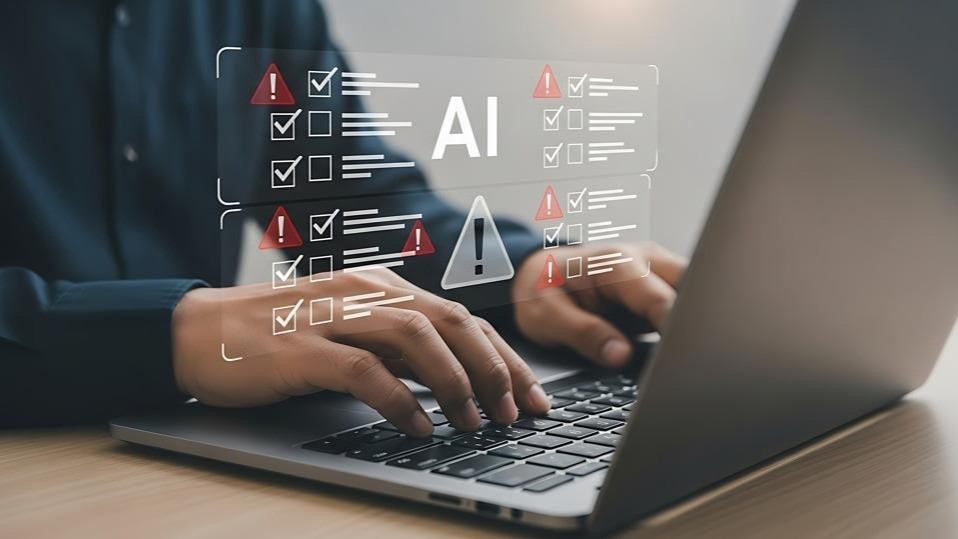The 5 Cloud Computing Mistakes You Must Avoid This Year
19 May 2025
In the past decade, cloud computing has become foundational to the way the world does business. It’s given rise to entirely new categories of services, products and entire business models. From global e-commerce to the cloud AI tools used by millions of small businesses, cloud computing makes it all possible.
This is why the most successful businesses look beyond the cloud as simple IT infrastructure and embrace it as a new strategic capability.
It’s easy to make mistakes, though – and in my work with companies of all shapes and sizes, I see it happen all the time.
When it comes to cloud strategy, I see certain mistakes again and again. So here I’ll overview what I believe are the most common pitfalls businesses will stumble into over the next 12 months, and give some tips on avoiding them.

1. Not Approaching Cloud Strategically
Cloud isn’t just data centers or online storage. If it’s treated as a purely technical exercise in centralizing access to tools and data, we’ll miss out on some of the biggest opportunities.
Garage startups have grown into global titans in the cloud era by using it to create and deliver new products and services that wouldn't have been possible before. From streaming music, movies and games to work and productivity tools delivered via subscription, to virtual communities and worlds with their own economies and currencies. This involves not simply “lifting and shifting” legacy systems onto shiny new servers but rethinking entire business models. Embedding cloud into broader business strategy and understanding how it enables automation and innovation is key to avoiding this trap in 2025.
2. Overlooking Security
A mistake I frequently see companies make is assuming their cloud provider will take care of all their security needs for them. After all, companies like Google, Amazon or Microsoft must be pretty hard to hack, right? Unfortunately, misconfigurations on the client side or falling victim to one of the 60 percent of corporate data breaches committed by insiders can quickly render all of their sophisticated defenses useless. And cloud architecture itself can also create vulnerabilities, as demonstrated by an attack on Microsoft’s Azure service in 2023. After compromising one Azure business account through social engineering or phishing, hackers were able to “sidestep” into adjacent accounts owned by different businesses and plunder their data, too.
Avoiding the risks associated with cloud involves building a “security-first” culture where best practice is embedded across the organization, from training on how to spot phishing attempts to deploying AI counter-measures against infrastructure attacks.
3. Failing To Align Cloud And AI Strategy
Cloud and AI enjoy a symbiotic relationship. Cloud computing gives AI algorithms scalability, deployability, and access to all the data they need. AI helps cloud services run efficiently, optimize the use of power throughout its vast data centers, and personalize the delivery of service to fit customer needs. It’s frustrating to see many businesses still treating them as siloed technologies, limiting the value of both.
Netflix combined AI viewer analytics with cloud streaming, creating a new business model. Amazon did the same with e-commerce, and pharmaceutical giants like Pfizer have built AI-based drug discovery platforms in the cloud. Bringing these groundbreaking technologies together is critical to reaping the benefits of both.
Failing to take this approach can result in fragmented initiatives that don’t effectively capitalize on the potential of cloud or AI, expensive failures and loss of trust in digital transformation.
4. Not Keeping A Lid On AI Costs
Cloud computing isn’t cheap, and this is doubly true if you’re running AI workloads, with the high resource overheads associated with training and inference. Failing to control costs can easily lead to runaway bills, particularly given the 24/7, always-on nature of most AI services. Stability AI was seen as a huge success among AI companies thanks to pioneering image generation with its Stable Diffusion models. However, it ran into publicized financial difficulties due to the huge bills it was running up with cloud providers. Many other businesses risk similar problems on a smaller scale in 2025, particularly those ramping up AI operations without sufficient budgeting in place.
5. Becoming Locked In
According to a Gartner poll, 95% of businesses say they are currently “locked in” to their existing cloud provider, or that changing providers would be challenging.
Becoming so heavily reliant on any provider’s service that your business depends on them is a bad move. With cloud computing, it could limit your ability to adopt new technologies and pivot to new strategies when opportunities appear.
Avoiding becoming locked into a vendor’s pricing, roadmap, and usage policies is a key reason that many businesses choose to adopt multi-cloud strategies. This can provide the agility needed to shift workloads across different providers as strategic requirements change. Embracing open-source technology, modular architecture, abstraction layers, and virtualization can also help avoid damaging vendor lock-in.
This year, cloud computing will be a more powerful tool than ever before when it comes to driving growth and innovation. For many organizations, it will be integral to their success (or failure) with AI. Working to avoid the errors covered here in your business strategy should be a priority for anyone who doesn't want to turn opportunity into costly failure.
Related Articles
The 7 Banking And Fintech Trends That Will Define 2026
By now, “smart” versions exist of just about every home appliance, gadget and gizmos we can think of. However, manufacturers continue[...]
Why The AI Supercycle Will Fail Without Advanced Networks
By now, “smart” versions exist of just about every home appliance, gadget and gizmos we can think of. However, manufacturers continue[...]
The Two-Tier AI Economy: Why Half Of Companies Are Being Left Behind And How To Close The Gap
By now, “smart” versions exist of just about every home appliance, gadget and gizmos we can think of. However, manufacturers continue[...]
5 AI-Era Skills Mistakes That Will Cost Your Business Millions In 2026
By now, “smart” versions exist of just about every home appliance, gadget and gizmos we can think of. However, manufacturers continue[...]
5 ESG Trends That Will Shape Business in 2026
By now, “smart” versions exist of just about every home appliance, gadget and gizmos we can think of. However, manufacturers continue[...]
Dreamforce 2025 Proved The Agentic Enterprise Has Arrived
By now, “smart” versions exist of just about every home appliance, gadget and gizmos we can think of. However, manufacturers continue[...]
Sign up to Stay in Touch!
Bernard Marr is a world-renowned futurist, influencer and thought leader in the fields of business and technology, with a passion for using technology for the good of humanity.
He is a best-selling author of over 20 books, writes a regular column for Forbes and advises and coaches many of the world’s best-known organisations.
He has a combined following of 4 million people across his social media channels and newsletters and was ranked by LinkedIn as one of the top 5 business influencers in the world.
Bernard’s latest book is ‘Generative AI in Practice’.










Social Media